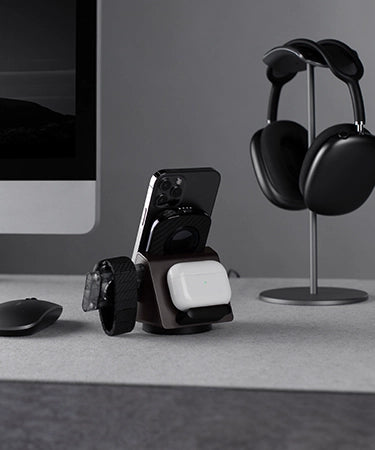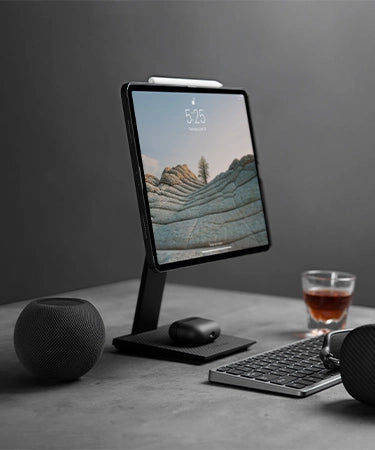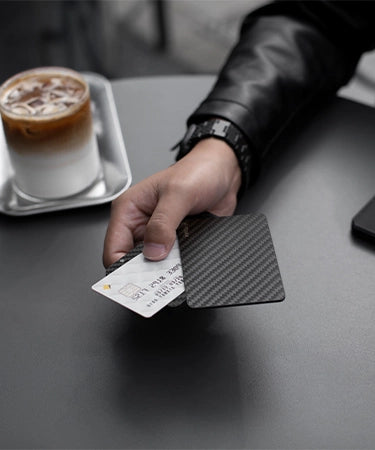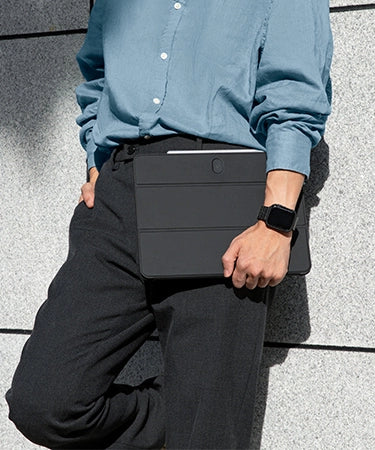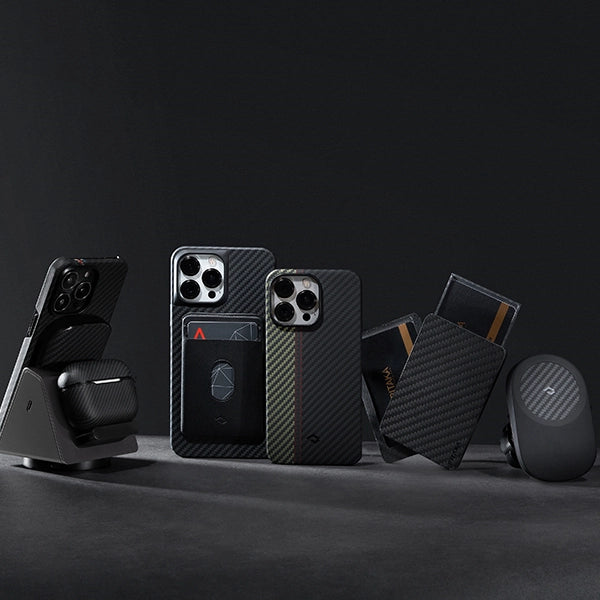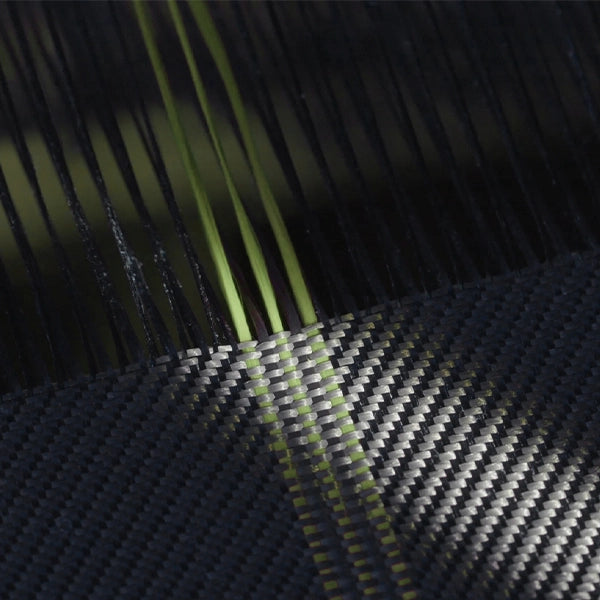
OK, let’s kick off with two simple questions.
- How many Credit Cards do you have in your wallet?
- How many Smart Cards do you have in your wallet?
Well, you don’t actually have to answer the first question.
However, when it comes to the smart cards, you might be surprised by what you think you have and what you actually have.
1. What is a Smart Card?
Well, to be able to answer the second question, you have to know what a smart card is.
A smart card has many names, “chip card”, “integrated card (ICC)”, “contactless smart card” etc, you see the name relates to what the card actually is; a small card with a microprocessor chip embedded within it. A Smart card is typically the same size as a credit card and is generally made out of plastic (polyvinyl chloride to be precise).
Smart cards can function either by physical contact with the reader or via a contactless system, similar to NFC (Near Field Communication). When a smart card is connected to a reader, the microprocessor becomes active within the card and this enables the card to support lots of different functions and applications.
Smart cards can be used to hold all sorts of personal information, which can be used for identification or authorization; they can even be used for data storage and application processing. Smart cards are even used as strong security authentication in corporate environments such as single sign-on (SSO) applications.
2. The History of Smart Card
In 1977, Michel Ugon, a French engineer, invented the first microprocessor ‘smart’ card with two chips on it, a microprocessor and a memory chip.
However, it was not until 1983 when smart cards were used in general circulation as telephone cards used to operate French pay phones, known as the Télécarte.
After the success of the telephone card, the French Carte Bleue debit card was the first to have a microprocessor embedded within it in 1992. This enabled the customer to use the card for making payments. The customer would insert the card into the merchant’s point of sale terminal, enter their personal identification number (PIN) and if correct, then they will be able to pay for the sale. For some small transactions, such as paying for toll roads, the customer could pay with their smart card without having to enter the PIN.
In 1994, Europay, Mastercard and Visa developed the EMV card; this later became ratified in 1998 and is considered to be the basis for all smart cards that are in circulation today. Furthermore, as you might have seen in my last post, the EMV standard has caused a worldwide shift in replacing the rather antiquated magnetic strip you find on the back of many cards out there with a more secure chip-based solution.
The uses for smart cards are constantly expanding into new applications, banking (debit and credit cards), transportation (public transport, motorway tolls, airline tickets), drivers’ licenses, citizen cards, patient cards, biometric security cards, etc. the list is constantly growing.
3. The Design of Smart Card
Smart cards come in a variety of forms, each with their own specific target application or function:
- Memory cards – that can store data in specific ways
- Multi-mode communications cards – that can communicate in several ways
- Hybrid cards – that contain multiple microprocessors within
- Multi-component cards – designed for specific situations, eg. Fingerprint sensors
In fact, if you look at the current list in its entirety, you will be amazed at how many different types of smart card there are.
- The Contact smart card
Contact smart cards are the size of a conventional credit or debit card and have a single embedded integrated circuit chip within it that either contains just memory or memory and a microprocessor.
The memory only version of the smart card provides a very similar function to that of the old floppy disk (remember those?). They are cheaper to manufacture compared to the microprocessor cards and do not have much security within them which means that they are not appropriate for storing sensitive or secret information.
A contact smart card will only ‘switch on’ when it is inserted into the card reader. Small pins within the reader make contact with the pads on the smart card, which then activate the microprocessor within. These types of card are very popular in things such as network security applications, vending machines and electronic cash, government ID cards etc.
- The Contactless smart card

Contactless smart cards use RF (or radio frequency, a 13.56-MHz radio frequency identification) between the card and the reader without any physical contact. The card is passed nearby to the reader and the microprocessor within the card is activated by RF induction waves from the reader. This allows the card to interrogate the chip and read the data stored in it, for example Visa’s payWave, Mastercard’s PayPass or American Express’ ExpressPay.
Contactless cards have no power source within, instead they contain a small induction coil connected to the microprocessor. This coil captures radio waves emanating from the reader, which then converts them into electricity to power the cards electronics.
There are two general types of contactless smart card:
- Memory cards which contain non-volatile memory and some basic security logic, and
- True read/write smart cards, which contain an RFID called a CSN (Card Serial Number) and a re-writeable smart card microchip.
- Multi-mode communications cards
Multi-mode communication cards have multiple methods of communications, including ISO7816, ISO14443 and UHF Gen 2.
The manufacturing method of the card will determine whether the card is a Hybrid card or a Dual Interface card. This can also relate to cards that have a magnetic stripe and or bar code as well.
Hybrid cards have multiple microchips, one to control the radio wave communications and one to control the data, whereas the Dual Interface card has a single microchip handling all the functions required.
- Multi-component cards
Multi-component cards are designed for specific market solutions where conventional cards cannot support the requirements, for example, cards with embedded fingerprint sensors designed to increased security or cards that generate one-time passwords and even cards with display for use with online banking applications.
Each of these technologies is specific to a particular vendor and is typically patented to prevent others copying them.
4. The Application of Smart Card
Now this next bit is quite interesting because you will be amazed at how many different applications there are for the smart card today.
From the earliest, prepaid telephone cards of the 1980’s that just contained some memory through to the latest, state-of-the-art multi-function smart cards of today, the application of the smart card has continued to grow in both application and functionality, from financial through to healthcare, it knows no boundaries and it’s usage is growing.
- Financial Cards

Smart cards continue to play a very significant role in supporting all sorts of financial transactions, for example credit cards, ATM cards, fuel debit cards, TV authorization cards, household pre-pay utility cards, high security ID cards, access control cards, public transport and yes they even support the public phone payment systems, although how long that will last with everyone having a mobile phone, is probably not much longer.
Smart cards can also serve as sort of electronic wallet. The smart card chip can be “loaded” with funds to pay all sorts of things such as parking meters, vending machines or even directly to the merchant.
Below are some best-known classic payment cards:
- MasterCard: PayPass Magstripe, PayPass MChip
- Visa: Visa Contactless, Quick VSDC, “qVSDC”, Visa Wave, payWave
- American Express: ExpressPay
- Discover: Zip
- Unionpay: QuickPass
The major development in the financial cards market today is the push to remove the old magnetic strip on the back of the card and move to a microchip smart card instead. This development is driven primarily by the EMV mandate established by Europay, MasterCard, and Visa as you might have read in my previous posting.
- Mobile Communication Cards

The SIM (security identity module or subscriber identification module) phone cards have been one of the most prominent application uses of smart cards in recent years and are used by all phone systems under the Global System for Mobile Communication (GSM) standard.
The SIM card provides a wide range of functions needed by the host phone from storing network specific information required to authenticate and identify the SIM on the network.
SIM cards have been reduced in size over the years due to the ever-increasing demand to make handsets smaller and more powerful. Starting with the Full-Size SIM (1st Form Factor or 1FF), then the Mini SIM (2FF), then the Micro SIM (3FF) and today we have the Nano SIM (4FF) introduced in 2012. There is also a specific embedded SIM or eSIM that is soldered directly onto circuit boards for specific applications.
- Loyalty and Store Value Cards
Stored value cards are another use of smart cards, especially in Loyalty programs. People are starting to appreciate that these are more convenient and safer than cash. What is even more interesting is that they can track and provide incentives to repeat customers, improving the shopping patterns for the retailer’s marketing teams.
For loyalty card issuers, the story gets even better as residual balances are often left unclaimed, which helps with bottom line profits in the long run.
For multi-chain retailers, by administering loyalty programs, they can centrally locate and track all data.
There are many loyalty programs that use smart cards to improve services, for example the transportation industry, parking, laundry, gaming, retail shops and of course the entertainment industry.
In fact, the usage of smart cards in the transportation industry has increased dramatically over the past few years and many people still think that their metro card is magnetic stripe based cards, when in fact, it’s most likely now a smart card.

For example, if you have one of these:
Singapore's CEPAS, Toronto's Presto Card, Hong Kong's Octopus Card, London's Oyster Card, Dubin's Leap card, Brussel's MoBIB, Quebec's OPUS card, San Francisco's Clipper card, Auckland's AT Hop, Brisbane's go card, Perth's SmartRider and Sydney's Opal Card.
Then, yup, you have a smart card for travelling around with.
- Identification cards
Smart cards are an excellent solution to authenticating someone’s identity and can provide excellent security control through two or even three factor authentication when coupled with biometric data or PKI (Public Key Infrastructure) digital certificates.
The U.S. Department of Defense (DoD) Common Access Card, and other cards used by other governments for their citizens provides a secure layer to control identification and access.
Smart cards are often used by emergency responders to identify who they are and what skills they have. These allow first responders to bypass the bureaucracy of paperwork and focus more on the emergency resolution.
- School cards
Smart cards are being provided to students in many schools and colleges and are an excellent way to manage the complexities of running a school, including:
- Tracking student attendance
- Acting as an electronic purse, to make payment at canteens and for laundry facilities.
- Tracking loans from the school library
- Access to transportation services
- Healthcare cards

Healthcare is an obvious place to deploy smart cards due to the ability to provide accurate and timely information in what is often a crucial situation. Many countries with national health care programs have deployed smart card systems.
Smart cards can improve the health and welfare as well as the security and privacy of the patient. They can provide a highly secure method to transport patient medical records and reduce the chances of healthcare fraud as well as reducing paperwork overheads.
The patient data stored in the chip can be read very simply with the aid of the appropriate smart card reading device and this facilitates the secure sharing of patient clinical data amongst multiple health care providers.
Altogether they have been responsible for a considerable reduction in administrative work for the insurance organisations, hospitals and medical practices seeking smarter health solutions.
- Other Uses
Smart cards are widely used in TV broadcasting solutions such as cable or satellite pay per view services.
The transmitted signal is encrypted to prevent unauthorised reception and TV piracy. The TV receiver has a smart card reader within and when an authorised smart card is inserted, the data on the card is used to decrypt the signal and display the broadcasted TV program.
5. The Advantages of Smart Cards
- More Security
Smart cards provide tamper-proof storage by using encryption and authentication methods to improve card security.
Considerable effort has gone into studying the patterns and techniques behind credit card fraud and it has been proven that the magnetic strip on the back of old style credit cards is the biggest problem and cause behind card identify theft.
It has been proven in many situations that smart cards provide a significant layer in combatting credit card fraud, as they are far more secure and reliable.
- More Information Storage
The amount of information that a traditional magnetic stripe card can hold is limited as there are only three tracks to store information.
Contrast this with the storage capabilities of a smart card which can hold a patient's entire medical history including x-rays etc and you can start to see how a smart card can hold a lot more information than the old magnetic strip.
- Flexibility
Compared to the magnetic strip, Smart cards have a lot more flexibility in what they can do.
They can store multiple types of information including identification, credit cards, business and family contacts, they can do more complex functions and even read your fingerprint or display crucial security information.
The ability to combine functionality into ever more demanding situations proves that smart cards are here to stay and that the magnetic strip is on it’s way out.
- Data Integrity
The information on a smart card cannot be erased or removed accidentally by any electrical or magnetic means.
This point is quite important. You see, many people are concerned about magnetic interference affecting their credit cards, store cards, loyalty cards etc.
But with a smart card there is no need to worry because the embedded chip cannot be affected by magnetic interference, so your data and its functionality are perfectly safe.
This is even more evident with cards that are both smart and have the old magnetic strip on the back (used for backwards compatibility with older retailers, merchants etc).
If this type of card were to be subject to a strong enough magnetic field so that the magnetic stripe were erased, the card would still be perfectly usable as the data is also securely and safely held in the smart chip.
6. The Market Trend of Smart Cards

The scope and advantages of using smart cards in modern life are massive.
The original intention of implementing smart card technologies was to introduce a stronger security measure to fight against the increasing data theft, especially in developed economies. That's why those industries in need of strong security measures, like retail and BFSI (Banking, Financial Services, and Insurance) industries, have a high demand for smart cards.
If you were to look at the future development of the smart card, it is evident that there is strong growth in high-end SIM cards and partnerships with LTE providers and NFC-enabled devices. So it is becoming increasingly important for businesses to adopt smart card technologies into their core business strategies.
According to a Global Industry Analysis of Smart Cards Market, the global smart card market is expected to progress at a CAGR (Compound Annual Growth Rate) of 7.4% from 2016 to 2023 in revenue and the market is expected to reach a value of US$14.1 billion by 2023.
According to the Smart Card Alliance Organization, Latin America has an over 70% market penetration of smart cards and services though it showed the second-lowest share in both revenue and volume in 2014. Brazil, Mexico, and Argentina are showing the greatest potential in the application and growth of smart card solutions.
In Asia Pacific, Australia, South Korea, and Japan are the top areas for global and regional smart card solution providers. China and India are showing a profound expansion in smart card market penetration.
Currently, most applications of the smart card in APAC are retail, loyalty, and financial. Till 2023, it is expected to enter into low-end applications, government transactions, and transportation transactions.
In Conclusion
So, now you know a bit more about the smart card industry and just how ‘smart’ these cards really are.
As you will agree, smart cards are safer, flexible, more intelligent and here to stay with us as we slowly, but surely, say goodbye to our old friend, the magnetic stripe.
And if nothing else, remember this, a smart card will remain smart when it comes into contact with any magnetic field, whereas the magnetic strip will turn into a useless, brown stripe on the back of your card.
So, check all the cards in your wallet now, if any of them have a magnetic stripe on them, check and see if they also have a smart chip pad on them.
If not, demand a smart card from your supplier and if they don’t have one, perhaps it’s time to change to a supplier who does, because they are the ones who are working towards the future.

